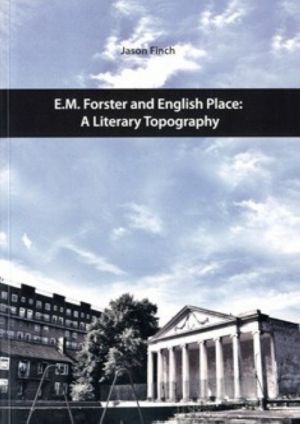This is the first study of E.M. Forster's writings on English place to cover the full range of his writings. Forster's feelings for place were intense, but in recent years his sensitivity to the uniqueness of every place he experienced has largely been ignored by critics. Here, a deep locational criticism applicable to the stury of other authors, groupings and periods is proposed. This feers on the notion of produced space devosed by Henri Lefebvre. It also draws on the practice of topographers and local and architectural historians, who begin with details and move from these towards a larger picture. Key to the practice of deep locational criticism is the juxtaposition of close, historicised readings of the representations of place in literary text with accounts of journeys to and researches into the places writers write about and in which they have lived their liver.
Forster wrote about sub-national, regional and local English places which can be found on maps. He also constructed ideas of place by combining zones which actually existed and intuiting or generalising about their identities. Examination of this reveals tensions, ambiguities and micro-narratives. He was less secure in Cambridge than is often thought. People have thought him anti-London. He wasn't. Yes, he demonised it in earlier writings, but in later ones he saw it as a site of liberation. As a famous writer, he has sometimes become a token in a game played by others, even after his death. At Stevenage, something called the 'Foster Country' has been constructed and used as a way of blocking schemes for building on farm land.
This study conceptualises his view of the relationship between the Home Countries around London and England beyond visually as a target, with a multiple London at the centre, then two rings beyond, the Home Countries and, outside that, an idea of Wild England, first pursued, later abandoned. In youth, Foster understood England by means of his own part of it. When young, he mockingly and satirically portrayed the comfortable, hypocritical public-school field he dubbed 'Sawston'. Later on, he cast this aside. Forster was not only attached to English places but also calculatingly dismissive of their importance.
This is the first study of E.M. Forster's writings on English place to cover the full range of his writings. Forster's feelings for place were intense, but in recent years his sensitivity to the uniqueness of every place he experienced has largely been ignored by critics. Here, a deep locational criticism applicable to the stury of other authors, groupings and periods is proposed. This feers on the notion of produced space devosed by Henri Lefebvre. It also draws on the practice of topographers and local and architectural historians, who begin with details and move from these towards a larger picture. Key to the practice of deep locational criticism is the juxtaposition of close, historicised readings of the representations of place in literary text with accounts of journeys to and researches into the places writers write about and in which they have lived their liver.
Forster wrote about sub-national, regional and local English places which can be found on maps. He also constructed ideas of place by combining zones which actually existed and intuiting or generalising about their identities. Examination of this reveals tensions, ambiguities and micro-narratives. He was less secure in Cambridge than is often thought. People have thought him anti-London. He wasn't. Yes, he demonised it in earlier writings, but in later ones he saw it as a site of liberation. As a famous writer, he has sometimes become a token in a game played by others, even after his death. At Stevenage, something called the 'Foster Country' has been constructed and used as a way of blocking schemes for building on farm land.
This study conceptualises his view of the relationship between the Home Countries around London and England beyond visually as a target, with a multiple London at the centre, then two rings beyond, the Home Countries and, outside that, an idea of Wild England, first pursued, later abandoned. In youth, Foster understood England by means of his own part of it. When young, he mockingly and satirically portrayed the comfortable, hypocritical public-school field he dubbed 'Sawston'. Later on, he cast this aside. Forster was not only attached to English places but also calculatingly dismissive of their importance.













